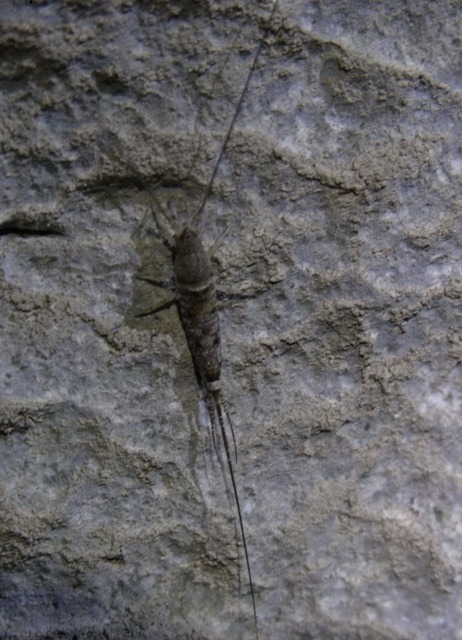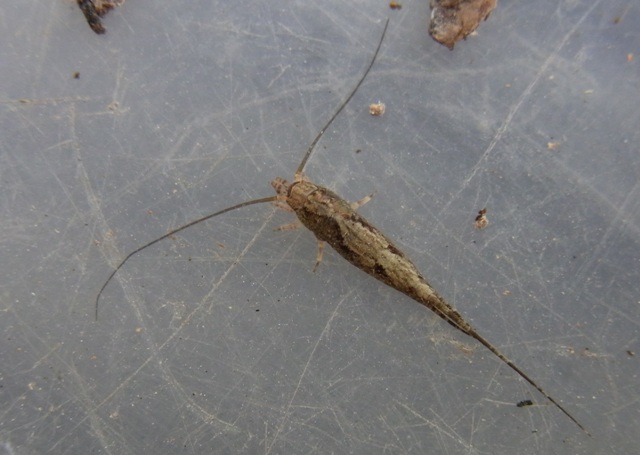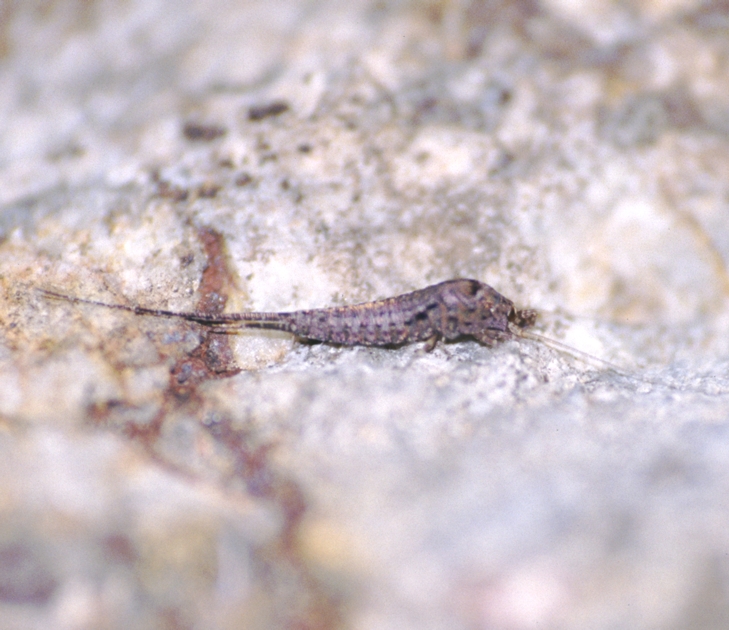Phylum Arthropoda
Subphylum Hexapoda
Class Insecta
Order Archaeognatha
Common name: bristletails
Overview
Bristletails are elongate wingless hexapods, usually less than 2 cm in length and superficially resembling silverfish (Zygentoma). They have compound eyes that meet in the middle of the head, long, many-segmented antennae, 7-segmented maxillary palps and two long cerci either side of a longer, slender tail filament. The body is covered in minute scales and is mostly grey in colour. Although they can run, bristletails use a unique escape mechanism when disturbed: they can jump distances up to 10 cm by rapidly contracting specialised musculature in their thorax and abdomen.
Distribution and diversity
Bristletails occur across Australia. Around 350 species are described worldwide. Ten species in five genera, all in one family, are recorded for Australia, with estimates of around 15 species in total.
Life cycle
Bristletails can exhibit parthenogenesis. However, reproduction is generally sexual and transfer of sperm is indirect. Generally the male deposits a spermatophore (sperm package) on the substrate and subsequently it is taken up by the female into her gonopore (genital opening). Around 15 soft, orange-coloured eggs are laid into rock crevices or holes dug in the soil with the ovipositor. The larvae resemble small adults. They develop slowly, and may take up to nine moults, spanning six months to two years, before they reach maturity. Unlike many other insects, adults continue to moult throughout their life.
Feeding
Typically bristletails feed nocturnally and eat a range of plant matter such as algae, lichens and decomposing plant tissue; they may also scavenge on dead arthropods.
Ecology
Bristletails are found in a wide variety of habitats, including coastal cliff and forest environments. They prefer damp microhabitats and may be found in rock crevices, under the bark of trees, in soil or leaf litter.

Nesomachilis sp. from Chile
Image credit: � Graeme Smith
used with permission

Nesomachilis sp. from New Zealand
Image credit: � Graeme Smith
used with permission

Archeognatha from Brisbane, Queensland, Australia
Image credit: E.S. Volschenk
� Western Australian Museum









